NorSat-TD (NorSat Technology Demonstrator)
EO
Atmosphere
CNES
Gravity and Magnetic Fields
NorSat Technology Demonstrator (NorSat-TD) is a planned technology demonstrator mission developed by the Space Flight Laboratory (SFL) of University of Toronto, Institute for Aerospace Studies (UTIAS) in Canada through the Norwegian Space Agency (NOSA). NorSat-TD is designed as a microsatellite aimed at validating and testing out new payloads and concepts from Norway, the Netherlands, France and Italy.
Quick facts
Overview
| Mission type | EO |
| Agency | CNES, ASI, NSO, NOSA |
| Mission status | Operational (nominal) |
| Launch date | 15 Apr 2023 |
| Measurement domain | Atmosphere, Gravity and Magnetic Fields |
| Instruments | VDES, AIS/IOT, CORA-micro, SmallCat, SpaceStar |
| Instrument type | Communications, Precision orbit |
| CEOS EO Handbook | See NorSat-TD (NorSat Technology Demonstrator) summary |
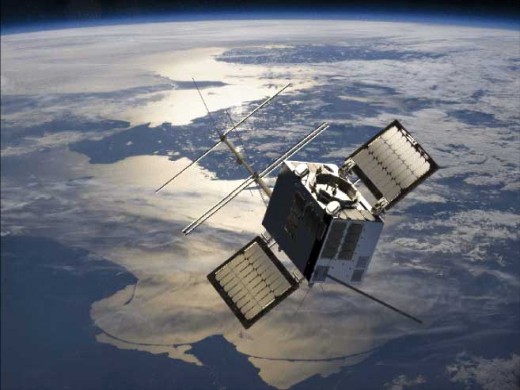
Summary
Mission Capabilities
NorSat-TD will carry an Automatic Identification System (AIS) receiver, Small Communication Active Terminal (SmallCAT), VHF (Very high Frequency) Data Exchange System (VDES), Onboard Laser Reflector and Satellite Collision Avoidance.
The AIS receiver will assist in geolocating maritime vessels; SmallCAT will be used to support the Norwegian Defence Research Establishment’s experiments; and VDES will assist in establishing higher bandwidth and more reliable two-way communications from ships, other satellites and ground segments to the satellites. The Onboard Laser Reflector will track the location of NorSat-TD with ground-based lasers in Norway, France and Italy. Satellite Collision Avoidance is an instrument which improves satellite situational awareness to avoid colliding with other nearby satellites.
Space and Hardware Components
NorSat-TD will utilise the DEFIANT microsatellite bus, developed by SFL. This bus weighs 35 kg and has a footprint size of 30 x 30 x 40 cm. Furthermore, there will be an iodine-fuelled electric propulsion system used to adjust the orbit of NorSat-TD as a test payload. This propulsion system is designed by French startup company ThrustMe, and aims at moving spent satellites into lower orbits to burn in the atmosphere rather than generating more space debris.
NorSat-TD (NorSat Technology Demonstrator)
The Norwegian Space Agency (NOSA) has awarded Space Flight Laboratory (SFL) of UTIAS (University of Toronto, Institute for Aerospace Studies) Canada a contract to develop the NorSat Technology Demonstrator (TD) microsatellite. With a primary mission of testing out new technologies in space, NorSat-TD will validate payloads and concepts from Norway, the Netherlands, France, and Italy. 1)
![Figure 1: Artist's rendering of NorSat-TD in orbit [image credit: Space Flight Laboratory (SFL)]](https://eoportal.org/ftp/satellite-missions/n/NorSat-TD-19022021/NorSat-TD_Auto4.jpeg)
SFL, which developed the operational NorSat-1 and -2 microsatellites launched in 2017, as well as NorSat-3 expected to launch in Q2 2021, has been contracted to design and build the NorSat-TD spacecraft and perform integration and testing of all systems and payloads. NorSat-TD has completed its final design review and been slated for launch in 2023.
"The Norwegian Coastal Administration relies on NorSat-1 and -2 to accurately track large commercial vessels in its territorial waters and beyond," said SFL Director, Dr. Robert E. Zee. "NorSat-TD will fly technology that is planned to augment the ship tracking capability of Norway with a miniaturized AIS-receiver and aims to expand the technology available for future missions, including micropropulsion, precise point positioning and laser-based communications."
NorSat-1, -2 and -3 were built on SFL's 15 kg NEMO microsatellite platform, measuring 20 x 20 x 40 cm. Due to the additional payloads planned for NorSat-TD, the demonstration satellite will be developed using SFL's larger 30 x 30 x 40 cm DEFIANT microsatellite bus with a mass of 35 kg.
"You can think of DEFIANT as a NEMO platform that doesn't require a dispenser," said Zee.
NorSat-TD represents impressive technological collaboration among European nations. Multiple advanced or experimental payloads will see their first applications in orbit aboard the microsatellite:
• Fifth Generation AIS Receiver – An advanced version of the Automatic Identification System (AIS) receivers developed by Kongsberg Seatex of Trondheim, Norway, as primary instruments for the first three NorSats, this miniaturized device with CubeSat form factor will receive AIS signals broadcast by large commercial maritime vessels. AIS enables the locations and status of ships to be tracked and monitored. The new NorSat-TD receiver will also be used to test the IoT (Internet of Things) in the Arctic, according to NOSA.
• Small Communication Active Terminal (SmallCAT) – Developed by TNO, the Netherlands Organization for Applied Scientific Research, this instrument is also intended to support the Norwegian Defence Research Establishment's experiments with laser communications between the satellite their ground station, a potential gamechanger in the data volume that is possible from microsatellites in orbit.
• VHF Data Exchange System (VDES) – from Space Norway, an advanced communication system that first flew on NorSat-2 has been improved to enable higher bandwidth, more reliable two-way communications among and between satellites, ships, and land. Working together, NorSat-2 and NorSat-TD will provide greater communication capacity for ships in Norwegian waters, according to NOSA.
• Onboard Laser Reflector – A miniaturized laser reflector developed by the Italian INRI SCF research laboratory will be used to track NorSat-TD with ground-based lasers in Norway, France, and Italy.
• Satellite Collision Avoidance – Space Star, a space-based GPS instrument developed by Fugro will be tested as a highly accurate means of determining a satellite's position in orbit for improved situational awareness.
• Iodine-Fueled Electric Propulsion – ThrustMe, a French startup, has developed a new thruster designed to change a satellite's orbit, which will be tested on NorSat-TD. One potential future use of the thruster will be to move a spent satellite to a lower orbit, so it burns up in the Earth's atmosphere rather than leaving behind space debris.
NorSat-TD will be the seventh satellite developed by SFL for Norway. SFL built and integrated the AISSat-1 nanosatellite launched in 2010 to determine if reception of AIS signals in orbit was feasible. AISSat-1 proved so robust that Norway soon commissioned it as an operational ship-tracking mission. Subsequently, additional AISSats were built and launched and a new line of higher capacity microsatellites, the NorSats, were developed.
"NOSA is glad to be working with SFL on this demanding project. The flexibility of SFL and their micro-satellite platforms have met the varied and demanding challenges of this multi-mission technology demonstrator. We feel that this mission is again pushing the envelope for what we are able accomplish with these fast-paced low footprint projects," said NorSat-TD Project Manager, Tyler Jones.
SFL is a unique microspace provider that offers a complete suite of nano-, micro- and small satellites – including high-performance, low-cost CubeSats – that satisfy the needs of a broad range of mission types from 3 to 500 kg. Dating from 1998, SFL's heritage of on-orbit successes includes 65 distinct missions related to Earth observation, atmospheric monitoring, ship tracking, communication, radio frequency (RF) geolocation, technology demonstration, space astronomy, solar physics, space plasma, and other scientific research.
In its 23-year history, SFL has developed CubeSats, nanosatellites, and microsatellites that have achieved more than 135 cumulative years of operation in orbit. These microspace missions have included SFL's trusted attitude control and, in some cases, formation-flying capabilities. Other core SFL-developed components include modular (scalable) power systems, onboard radios, flight computers, and control software.
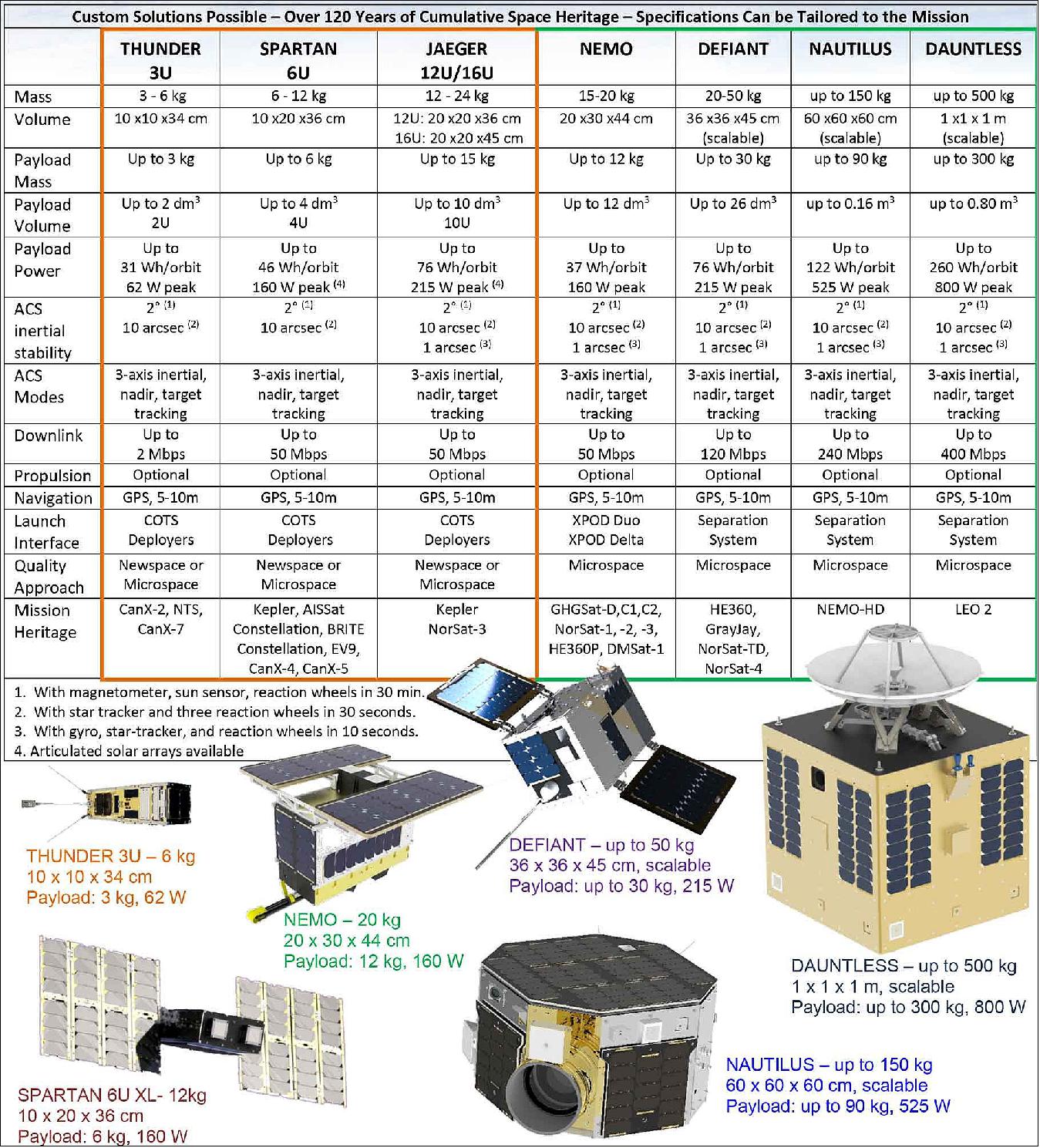
Launch
NorSat-TD was launched on Saturday 15 April 2023 at 06:48 am UTC onboard the Transporter 7 rideshare mission on a SpaceX Falcon 9 rocket, from Vandenberg Space Force Base in California,
With one more system on-orbit, ThrustMe enhances the Norwegian capacity to navigate and operate the NorSat-TD satellite in LEO. Highlighted goals of this mission include enhancing the space agency’s experience with propulsive satellite operations and improving its space safety capacity by supporting the development of space situational awareness and traffic management systems for Norway’s upcoming future missions. 5)
Mission Status
• April 15, 2023: NorSat Technology Demonstrator (NorSat-TD) was launched on Saturday the 15th of April, 8:48 AM Central European Summer Time on board Space X’s Transporter 7 rideshare mission from Vandenberg Space Force Base in California.
• January 20, 2021: The Netherlands Space Office and the Norwegian Space Agency signed an agreement that places Dutch high-technology on Norway's new national satellite NorSat Technology Demonstrator (NorSat-TD). The signing ceremony took place simultaneously at the embassies i both countries. 2)
- NorSat-TD will test technologies in orbit for Norwegian companies, state actors and international partners.
- Moreover, the new satellite will increase the competency of the Norwegian space sector, particularly in the field of advanced communications technologies, as well as in satellite control and operations in orbit.
- NorSat-TD is currently in the integration phase.
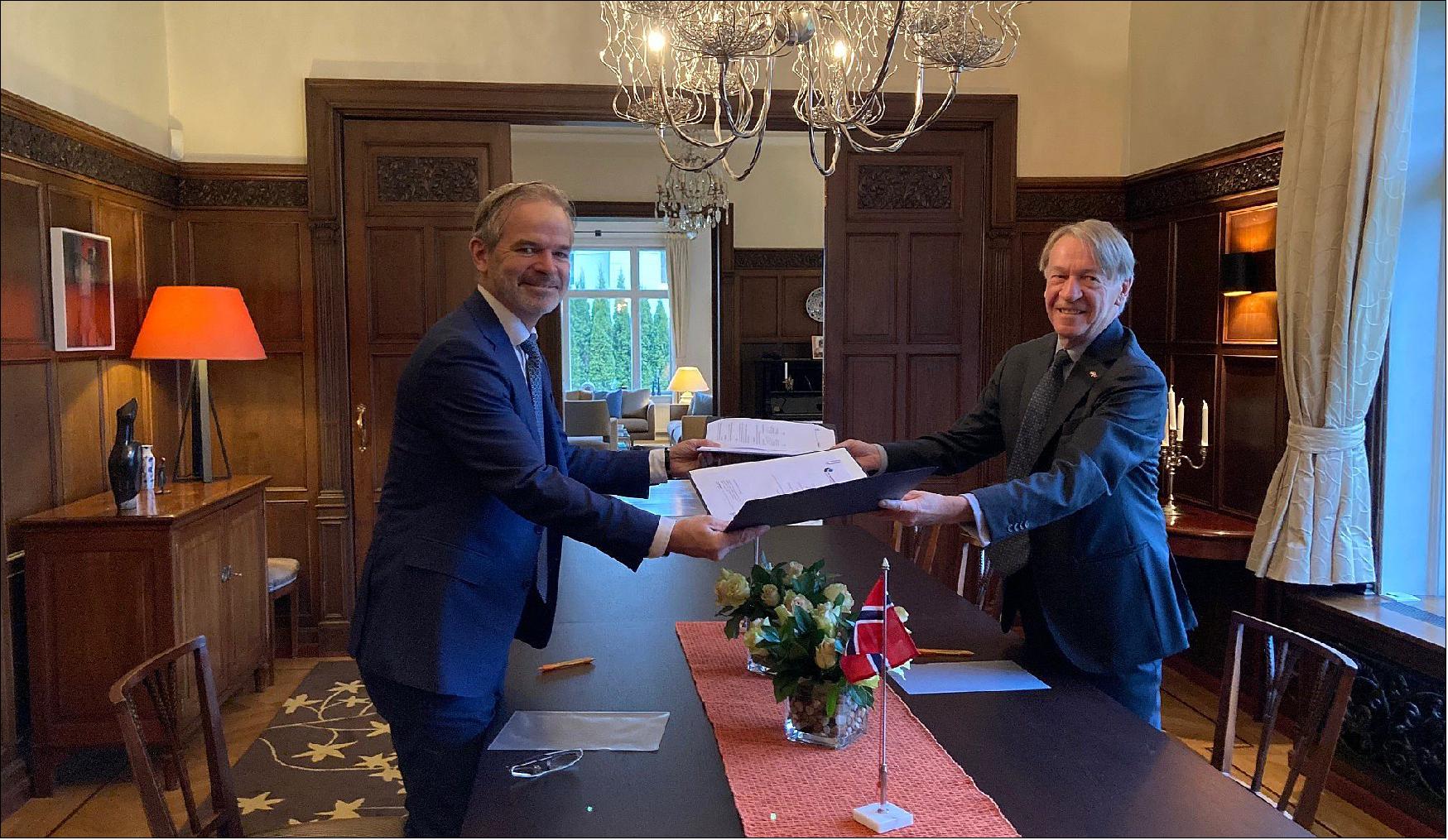
Parallel signing on video transmission
- The signing took place at the residence of the Dutch ambassador in Oslo and at the residence of the Norwegian ambassador in The Hague.
- Present at the signing in Oslo were Tom van Oorschot, the Dutch ambassador to Norway, and Christian Hauglie-Hanssen, Director General for the Norwegian Space Agency, as well as other representatives from the Norwegian Space Agency.
- Present at the signing in The Hague were Bård Svendsen, the Norwegian ambassador to the Netherlands, and Harm van de Wetering, Director General for the Netherlands Space Office, as well as other representatives from the Netherlands Space Office.
- The signing was done in parallel via transmission on video.
- It is great to get a ride from our Norwegian colleagues. This cooperation enables us to demonstrate promising high-tech for small satellites, says Harm van de Wetering, Director General of Netherlands Space Office.
- The Norsat-TD mission demonstrates the powerful impact of bilateral cooperation in the space domain. Cooperation on capacities which serve national needs, as well as satisfy future commercial ambition, serves as an important complement to Norway´s space activities within ESA and the EU, says Christian Hauglie-Hanssen, Director General of the Norwegian Space Agency.
Laser communication and electrical motor
- Netherlands Space Office (NSO) will, in partnership with the Norwegian Space Agency (NOSA), test communication between NorSat-TD and ground stations via laser technology. This payload has been delievered from TNO in the Netherlands.
- With the Dutch payload, called Small Communication Active Terminal (SmallCAT), the Norwegian Defence Research Establishment (FFO) will perform crucial tests in laser communication with their ground stations.
- French company ThrustMe will, in cooperation with the French space organization CNES together with NOSA, test a new electrical thruster that uses iodine as fuel.
- This thruster will increase Norway's competency in the operation and control of micro-satellites in low orbits.
Laser reflector, VDES and super-GPS
- NorSat-TD's payloads also include a miniaturized laser reflector from the Italian research institute INRI SCF Lab. This technology reflects laser beams from the ground to measure the distance to the satellite and determine its position in orbit.
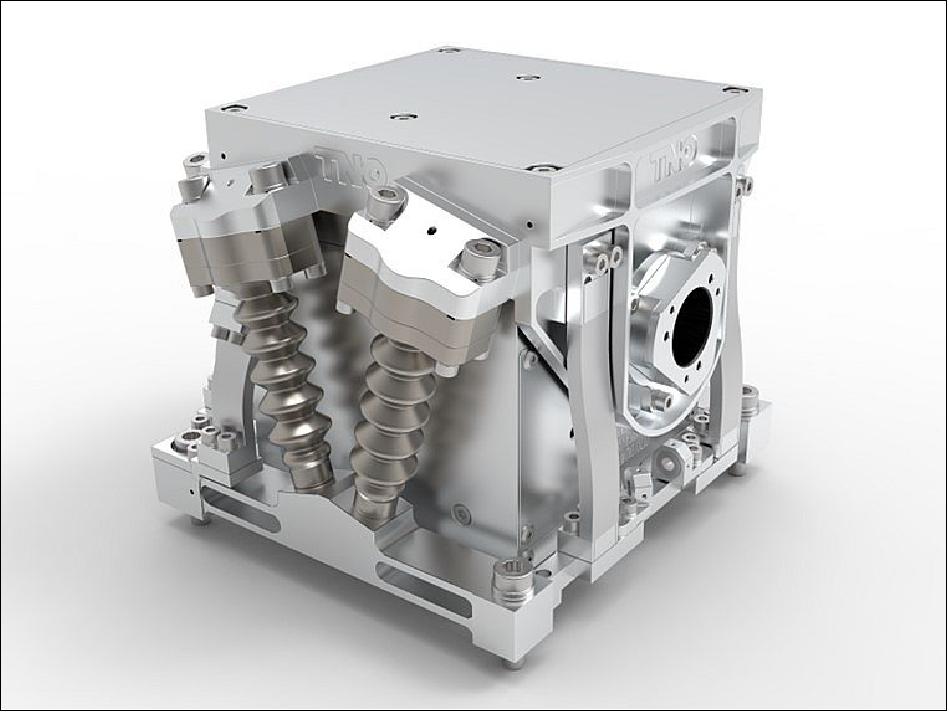
- The Norwegian Mapping Authority also uses such laster technology for geodetic measurements. Thus, NorSat-TD will be tracked by laser ground stations at the Norwegian Mapping Authority's laboratory at Ny-Ålesund in Svalbard, as well as by partners in France and Italy.
- Space Norway will demonstrate a new and improved technology, called VDES, for two-way communication between satellittes, ships and land. This technology will, together with Norway's national satellite NorSat-2, contribute to the development of a robust small-band network for the Artcic.
- With NorSat-TD, Fugro will loft its technology for maritime control and tracking up into space. This technology, called Space Star, will determine the satelllites position with an accuracy of 10 cm in real time, and improve collision detection for satellites in orbit.
Fifth Generation AIS Receiver
- As with the other Norwegian satellites, NorSat-1 and NorSat-2, launched in July 2017, NorSat-TD will carry an AIS receiver from Kongsberg Seatex for monitoring ship traffic from space.
- This new and miniaturized fifth generation AIS receiver will also be used to test the Internet Of Things in the Arctic.
- The new AIS receiver will monitor ship traffic in Norwegian and international waters via the international anti-collision system AIS, which all ships above 300 gross tonnes are obliged to carry onboard.
A Milestone for the Norwegian Space Sector
- NorSat-TD's payloads will require a slightly larger satellite than NorSat-1 and NorSat-2.
- Thus, NorSat-TD will measure 30 x 30 x 40 cm with a mass of about 35 kg, while NorSat-1 and -2 measure 20 x 20 x 40 cm with a mass of about 16 kg. More information about the Norwegian satellites here.
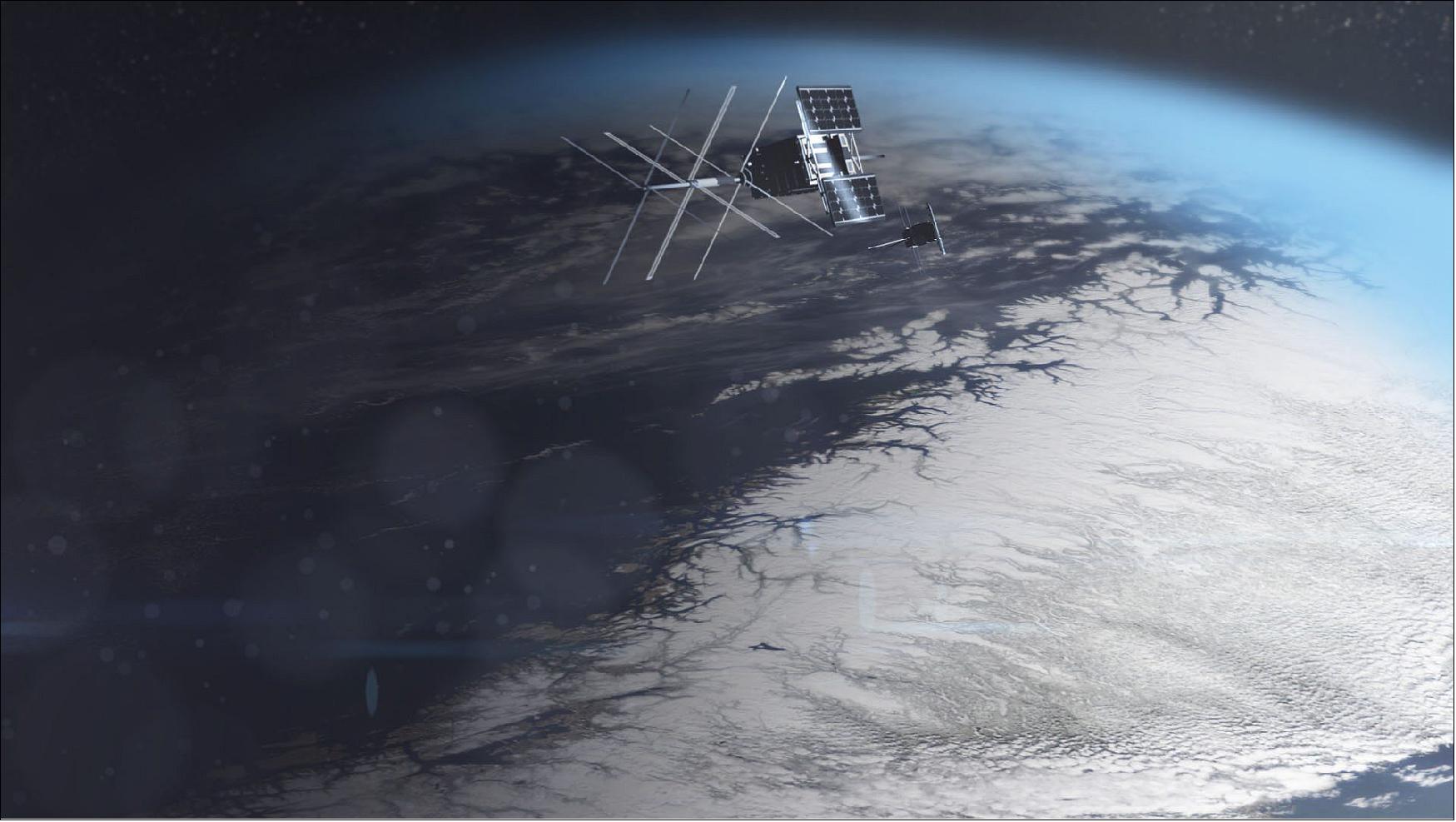
- NorSat-TD has already passed its final design review. Currently the satellite bus is being built and integrated by UTIAS/SFL (University of Toronto Institute for Aerospace Studies/Space Flight Laboratory), with launch planned for the first quarter of 2022.
- Norway's technology demonstrator in space is an important milestone for both the Norwegian Space Agency and the Norwegian space sector.
• January 05, 2021: ESA has awarded TNO an ARTES ScyLight contract to perform an in orbit demonstration (IOD), called SmallCAT (Small Communication Active Terminal), of a direct to earth laser communication terminal. 3)
- Background: TNO Space wants to pursue activities that have societal and economic impact. One of our aims is to enable secure broadband connectivity that will support the growing demand for data and increase communication efficiency. Next to that we want to stimulate economic growth in the Netherlands and Europe by enabling companies to realize new products, generate new business and improve their competitive position, based on our technology. SmallCAT is one example of these goals in practice.
- Optical satellite communication: SmallCAT consists of a <1U laser terminal module called CubeCAT which will be embarked onto the NORSAT-TD satellite. SmallCat will demonstrate a 0.3Gbit/s, CCSDS 03K compliant product providing high speed downlink capabilities from small-nano LEO Satellites. The CubeCAT module is mounted into a highly damped and hysteresis free suspension system developed by TNO that will allow to withstand the NORSAT-TD satellite launch loads.
- European connection: SmallCAT will be a hosted payload on the NorSat-TD Spacecraft, which is commissioned and operated by the Norwegian Space Agency (NOSA) and which will be launched early 2022. SmallCAT will communicate with the TNO GoCAT gigabit class optical ground station demonstrator that has been installed at a TNO location in The Hague, The Netherlands. To demonstrate the inter-operability of the CubeCAT laser communication technology, SmallCAT will also be used to connect to other European optical ground stations. The future commercial CubeCAT product will also combine a compact Course Pointing Assembly which is currently under development in a parallel project.
- Project partners: SmallCAT has been developed in a consortium led by TNO and includes the Dutch company Hyperion Technologies B.V (electronics) and the UK company Gooch & Housego (laser transmitter). The final CubeCAT system will meet a competitive recurring price target for series production by Hyperion Technologies B.V.
- Project funding: SmallCAT is supported by the Netherlands Ministry of Defence and the Netherlands Space Office and jointly funded by ESAs ARTES Strategic Program Line ScyLight and TNO together with the companies involved in the project.
• May 5, 2020: The objective of the project is to perform an In-Orbit-Demonstration of Precise Point Positioning technology on-board NorSat-TD. NorSat-TD is a technology demonstration mission coordinated by the Norwegian Space Agency to demonstrate key space-based technologies relevant to Norwegian industry. 4)
- Statsat AS is a government-owned company in Norway (through the mother company Space Norway AS). Statsat operates Norway's Low Earth Orbit satellites (currently four). The company is a non-profit company set up to service Norwegian governmental entities with services related to space infrastructure. This includes development, design, procurement of space infrastructure, and also satellite operation services. Project management, various analysis and advisory services related to small satellites are part of Statsat's scope of activities.
- Fugro Norway AS is a limited liability company based in Oslo (Norway), which is member of Fugro N.V., a Dutch multinational company headquartered in Leidschendam (Netherlands). In particular, Fugro Norway AS specializes in the delivery of high-accuracy real-time GNSS orbit/clock services and positioning solutions. — Fugro is the market leader in the provision of GNSS augmentation services for high-accuracy navigation tailored to offshore applications. Over more than 20 years, Fugro has developed a global GNSS infrastructure supporting a number of positioning augmentation services, from GNSS code and carrier-phase differential services to Precise Point Positioning (PPP).
References
1) "Norway Selects Space Flight Laboratory (SFL) to Develop Technology Demonstrator Microsatellite," UTIAS/SFL, 16 February 2021, URL: https://www.utias-sfl.net/?p=3543
2) "Agreement signed with the Netherlands for Norway's new satellite," Romssenter (Norwegian Space Agency) News, 10 January 2021, URL: https://www.romsenter.no/eng/News/News/
Agreement-signed-with-the-Netherlands-for-Norway-s-new-satellite
3) "ESA awards TNO with contract for in orbit demonstration of laser communication terminal for faster data transmission," TNO news, 5 January 2021, URL: https://www.tno.nl/en/about-tno/news/2021/1/
esa-contract-iod-laser-communication-terminal/
4) "In-orbit demonstration of PPP on-board Norsat-TD," ESA, 12 May 2020, URL: https://navisp.esa.int/project/details/107/show
5) SatNews "The ThrustMe NPT30-I2 iodine electric propulsion system launched on board the NorSat-TD satellite", April 17, 2023, URL: https://news.satnews.com/2023/04/17/the-thrustme-npt30-i2-iodine-electric-propulsion-system-launched-on-board-the-norsat-td-satellite/
The information compiled and edited in this article was provided by Herbert J. Kramer from his documentation of: "Observation of the Earth and Its Environment: Survey of Missions and Sensors" (Springer Verlag) as well as many other sources after the publication of the 4th edition in 2002. - Comments and corrections to this article are always welcome for further updates (eoportal@symbios.space).